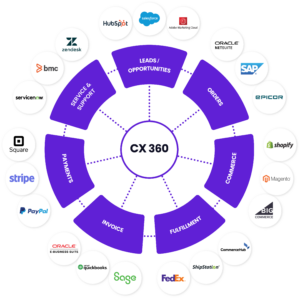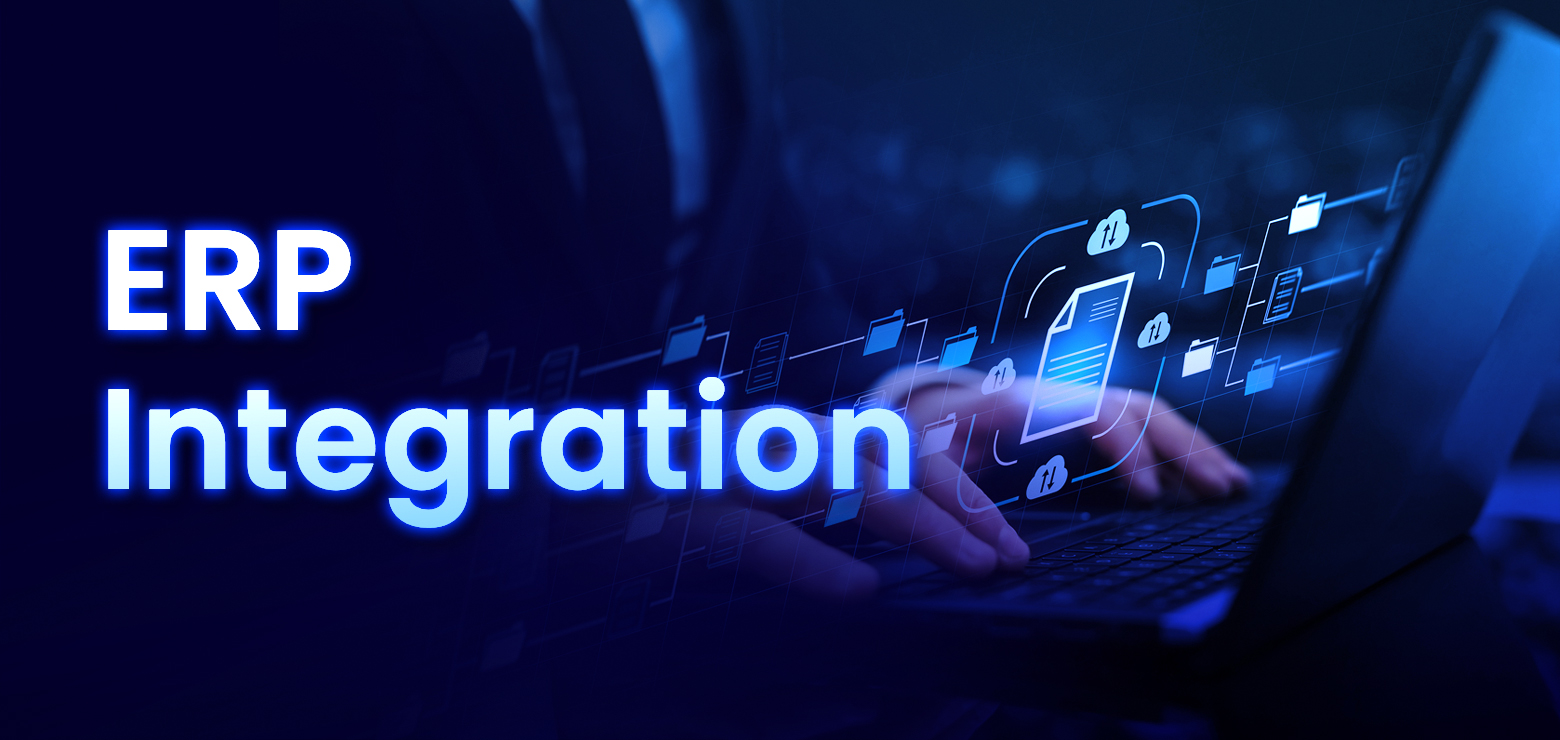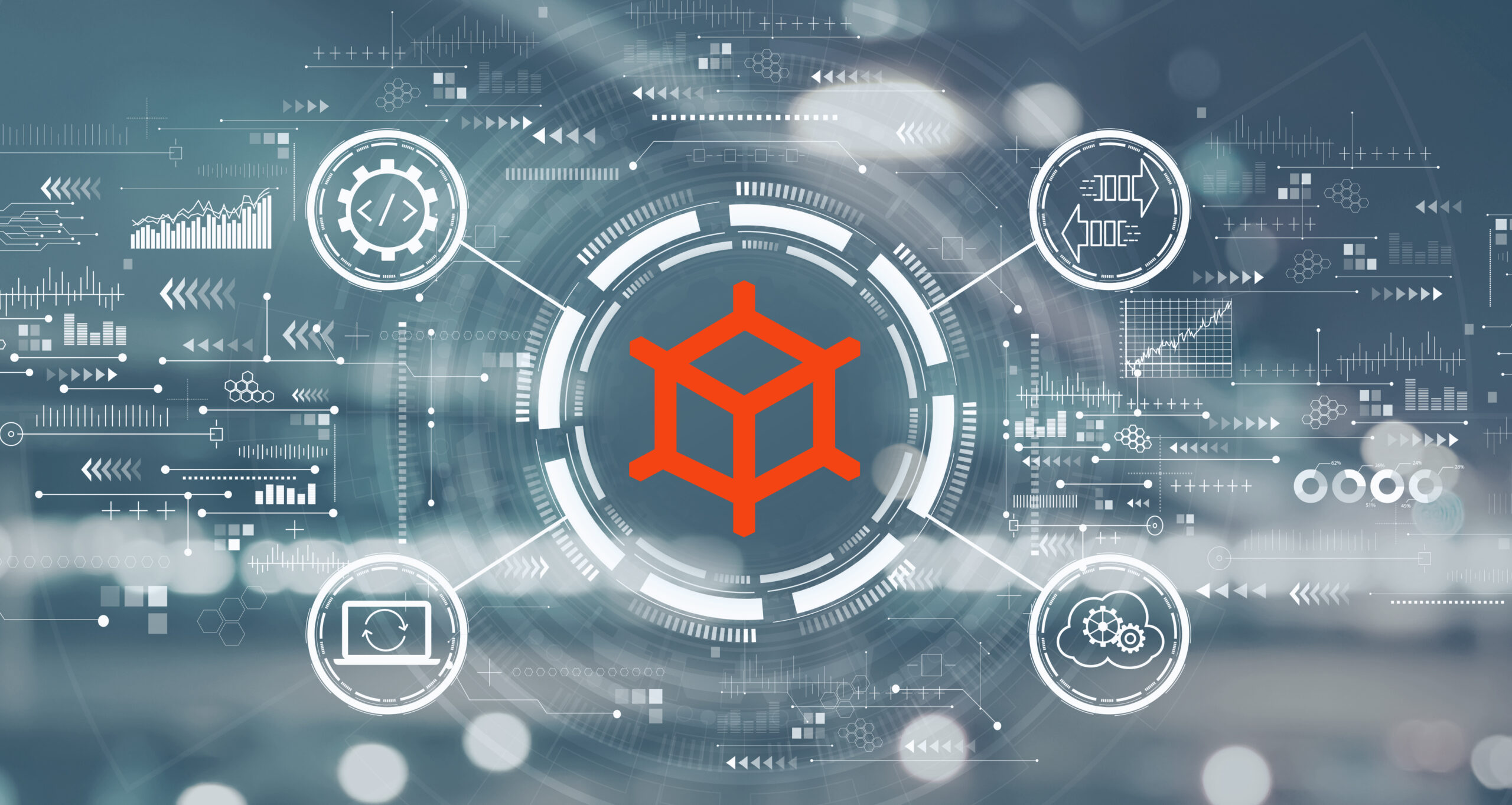The current economic environment demands that companies deliver exceptional customer experiences throughout the customer lifecycle. Fifty-nine percent of consumers say that they now place more importance on the customer experience when choosing the brand from which to buy.¹
Enterprise Resource Planning (ERP) systems play a critical role in providing the data needed to deliver those customer experiences. Traditionally used as back-office systems handling accounting and financial information, ERPs must now connect with customer-facing systems such as Customer Relationship Management (CRM), ecommerce, customer service, and many others to enable a seamless customer journey.
Companies need a modern approach to ERP system integration that overcomes challenges and puts them on the path to delivering exceptional customer experiences.
What is an Enterprise Resource Planning (ERP) System?
An enterprise resource planning (ERP) system is a business management software that helps automate a company’s essential business functions. For many organizations, an ERP is the system of record that collects inputs from departments across the organization – including accounting, manufacturing, supply chain, sales, marketing, and more – to ensure there is a single source of truth for its data.The term “ERP system” is often used synonymously with “financial system” (accounting, invoicing, financial reporting). Eighty-nine percent of the respondents in a survey considered accounting the most critical ERP function,² but vendors with integrated business software also offer many other modules – such as business intelligence (BI), customer relationship management (CRM), omnichannel commerce, material requirements planning (MRP), supply chain management (SCM), and human resource management (HRM).
Since an ERP system handles many customer-facing activities like orders, billing, fulfillment, and shipping, creating exceptional customer experiences requires ERP integration connecting to other applications and data sources a business uses.
What is ERP integration?
Simply put, ERP integration connects and synchronizes ERP software to other applications and data sources. It gives you a unified view of information from different systems in real time, whether the data originates in the ERP or other systems. The importance of ERP integration is that it increases the efficiency of business processes, business operations and workflows, as well as increases collaboration between teams.
Challenges faced without ERP integration
In today’s current economic climate, if your company does not have an ERP system integration, you face numerous challenges that stifle your ability to compete.
-
Data Silos
Data silos prevent companies from getting the most out of their systems. ERP systems that were implemented years ago might sit in legacy and on-premises data silos, while newer applications reside in the cloud. Disparate data silos lead to redundancy, inefficiency, and inaccurate data.
-
Slow Manual Processes
Without ERP system integration, you rely on manual processes to move information between the ERP and other systems. For example, when a customer places an order, it goes into a CRM. If the order must be manually entered into the ERP system, the workforce’s burden increases, and operational efficiency is hampered. The workforce required to do the manual processes are prevented from performing higher value work.
-
Lack of Real-Time and Accurate Data
Disconnected systems mean manual data entry and updates, which create a delay in information exchange across the customer experience and lifecycle. While manually processing a new customer order, the rest of the company does not have access to the order in real time.
Manufacturing might build inventory for a different product than what was ordered, leading to discrepancies in inventory management. The customer will not receive the status of the order. Accounting won’t send an invoice to the customer or book revenue. Everything waits until the order undergoes manual data entry.
-
Inability to Achieve Strategic Customer Experience Initiatives
Integration is imperative if businesses are to deliver on customer experience initiatives. An ERP system contains crucial financial, product, fulfillment, and other customer-related information. Without an integrated view of customers, companies like Amazon could not make in-the-moment recommendations on products to buy or give real-time status when the product arrives at your door.
Some companies have custom built integrations in the past, which tended to be point-to-point integrations with no reusable code. These ERP integrations require changes or replacement to extend them to add special features or to connect more systems. Companies cannot achieve their strategic customer experience initiatives until legacy custom-coded integrations are made extensible.
Types of ERP software integration
The role of ERP systems in system integration is crucial as they hold product, sales order, and customer data. The types of ERP integration that optimize business workflows are numerous; here are a few key ones to consider:
-
CRM-ERP Integration: Connecting Demand with Supply Chain
Sales focus on increasing revenue by acquiring, satisfying, upselling, and cross-selling customers. The CRM system holds the customer contact and interaction information, but CRM must integrate ERP for order management, fulfillment, and shipping.
The CRM with the largest market share is Salesforce Sales Cloud, but there are many others, including Adobe, Microsoft Dynamics, SAP, and SugarCRM. Some ERP integrations and systems include CRM modules.
-
Ecommerce-ERP Integration: Making Front-End Data Available
The COVID-19 pandemic accelerated the move to ecommerce as companies were forced to shift from in-person to contactless sales and services overnight. Ecommerce platforms provide customer browsing, ordering, and payment capabilities and are often the first contact with the customer.
The ecommerce platform’s success hinges on seamless ERP integration to manage the order fulfillment process — checking or updating inventory and shipping the product.
There are many ecommerce platforms, including Amazon, BigCommerce, Magento, Shopify, and others.
-
ERP-ERP Integration: Ensuring Accurate Financial Data
Companies may have multiple ERP systems, whether due to acquisitions, mergers, or departmental preferences. These ERP systems need to be connected to each other to create a consistent and accurate view of customer and product data.
The ERP systems used by many companies include Epicor, Microsoft Dynamics 365, Oracle NetSuite, SAP S/4 HANA, Sage, Workday Financials, and others.
-
Customer Service-ERP Integration: Tracking Support via Customer Service Systems
Excellent customer service boosts customer satisfaction, reduces churn, and responds to customer needs faster and intelligently. A broad range of applications handle customer service, support, and field service. Customer service software handles omnichannel capabilities, self-service capabilities, and proactive interactions through predictive analytics and AI.
Customer support software, often called IT Service Management (ITSM), manages IT desk and incident request management. Field service software manages warranty and contracts, returns and repairs, maintenance, and scheduling field service work. To ensure seamless customer interactions, companies must prioritize ERP integration by seamlessly integrating all these customer service applications.
Popular customer service platforms include BMC, Cherwell, Jira, Salesforce Service Cloud, Oracle Service, ServiceNow, ServiceMax, Zendesk, and others.
What are the benefits of ERP integration?
ERP system integration enables companies to make the most of their data and deliver exceptional customer experiences. Here are the specific benefits of ERP integration companies gain.
-
Drive Greater Efficiencies
Processing orders can be slowed down by the fact that sales-related documents are scattered in multiple repositories. By automating the business processes to pull documents together from different systems, manufacturers can reduce bottlenecks in the order-to-cash workstream, and reduce time delays in the fulfillment, delivery, and invoicing process.
Access to all customer and product information in one digital workflow reduces bottlenecks in order-to-cash and improves order turnaround time.
-
Personalize Customer Experiences
ERP integration helps your company get intelligent insights on what a customer needs or might want. If you can access all that data sitting in the back-office, you can create uniquely tailored offerings for your customers. But the right technology is needed to combine this data with additional online, offline, and third-party sources to create a single, dynamic customer profile. Then you can use this single view of the customer and apply AI to recommend best-fit messaging and offers across all your digital commerce interactions.
-
Optimize the Value Chain
Integration makes better use of data throughout your company’s value chain. A complete view of customer data enables manufacturers to better predict customer demand, quickly adjust to changes in the marketplace, accelerate the engineer-to-order process, and communicate more effectively.
Explore Jitterbit’s low-code integration platform for ERP integration
How to integrate an ERP with other systems
While there are older ERP integration methods such as point-to-point integration with custom code, Integration Platform as a Service (iPaaS) solutions are designed to make integrations easier and address ERP integration challenges. iPaaS solutions are typically built on the cloud and are used for application integration, data integration, B2B ecosystem integration, on-premises integration, API publishing, and other scenarios.
iPaaS solutions are generally based on an API integration platform that provides connectivity, workflow design, data mapping and transformation, and an integration lifecycle. Most connect to the more commonly used ERP solution, CRMs, customer service applications, or proprietary systems a company may have.
There are a range of iPaaS solutions with a broad spectrum of capabilities, but there are some trade-offs in capabilities. Some iPaaS solutions offer pre-built components to connect business applications and automate business processes, while others require IT to create the integrations themselves. iPaaS solutions with pre-built components simplify common integrations but may not provide the capability to handle more complex integrations.
Why choose Jitterbit for ERP integration?
Jitterbit’s iPaaS solution offers both the ease-of-use in common integrations and the depth to address complex integrations. Jitterbit’s Customer Experience solution is designed to accelerate the automation of popular business operations and processes across the entire customer lifecycle. Our solution is built on Jitterbit’s industry-leading iPaaS platform and leverages best practices from thousands of integrations by Jitterbit customers and partners.
Jitterbit’s Customer Experience solution comes with a complete lifecycle API Management tool and comes with these capabilities:

-
Single Platform for Integration
Based on Jitterbit’s API integration platform, which has robust capabilities to design, templatize, deploy, and manage integrations.
-
Out-of-the-Box Application Connectors, Integration Recipes, and Process Templates
Application connectors provide pre-built and reusable connectivity to a specific endpoint, such as Salesforce or NetSuite. Integration recipes are single, pre-built integrations that move data in one direction between like objects across two applications or systems (e.g., sync contacts between Salesforce and SAP). Process templates are pre-built use cases that accelerate the execution of specific business processes (e.g., Opportunity-to-Order for Salesforce and NetSuite) requiring connectivity to multiple objects and fields between the source and target application.
-
Intuitive Graphical Interface for Customizing Complex Integrations
For most companies, pre-built components can handle the most common aspects of integrations. But for more complex integrations, customization may be needed for transformations or other business logic. Jitterbit’s iPaaS offers the best of both worlds; pre-built components for the most common integrations and a drag and drop intuitive graphical interface to create reusable code. IT resources are minimized, and the reusable code is extensible as the company grows.
-
API Management
API Management enables a company to create, run, secure, manage, and analyze all APIs and microservices using a single platform. APIs can access any application or data source, either in the cloud or behind the firewall, at any time.
Jitterbit’ Customer Experience solution is proven to speed up the automation of business functions and processes by up to 80%.
To get the most out of any ERP system, companies need to connect it to other business applications and data sources – sales, marketing, logistics, procurement, and more. Integration is the key to creating an end-to-end, 360-degree view of your customers. Automate business processes and accelerate operations with ERP integration.
1 CX Trends Challenges Innovations, August 2020 Market Study, CCW. August 2020.
2 Gheorghiu, Gabriel. The ERP Buyer’s Profile for Growing Companies. SelectHub. 2018.



